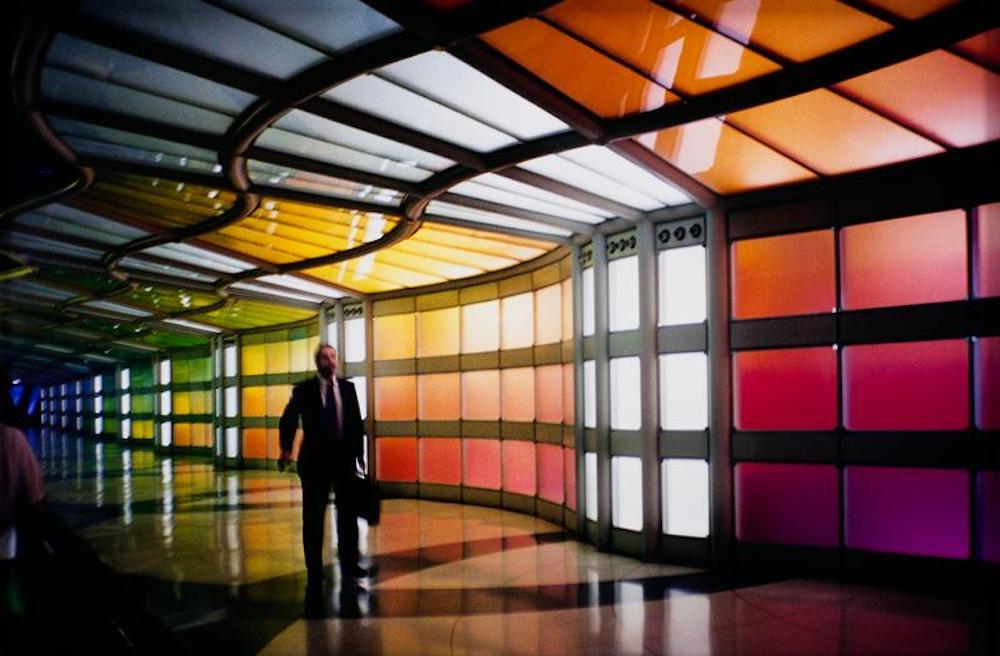Martha Rosler | Tate Modern
Quite suitably, this mini-exhibition of works is in a place of transit: a busy connecting room within the maze of permanent collection displays at Tate Modern. Crowds of wandering friend groups, mostly tourists, march past, without much of a glance at the display. One of the few who stopped to look while I was there, a pair of young English men, were loudly derisive.
I get the derision: at first glance, the collection’s impressively banal. The room contains a pair of video works, taken by Rosler while at airports and on the runway, three large-format photos of airport terminal interiors, and a vitrine of economy- and business-class airline menus. Not, all in all, the most aesthetically-appealing collection. But, taken together, the works resonated with me.
 Image source: Artsmia
Image source: Artsmia
Rosler has been working on this collection - called In the Place of the Public: Airport Series, since the mid-1980s, when she first became a frequent flyer. Each time it’s displayed, the main photographs are surrounded by vinyl wall texts, to enhance the mood: “Paranoias of betrayal,” states one. “Boulevard or intestine”. “Nebulous dread”. Phrases that naturally come to mind when encountering a security queue at an airport - especially this summer, when they’re so understaffed and overstretched.
The photographs were all taken in US terminals in the 1980s and 90s, on the fly, with point-and-shoot cameras. I’ve featured airport photographs on here before, from Andreas Gursky. But these works are a world away from the German artist’s pre-planned precision.
With Rosler, the grainy resolution of her photographs leads to an atmosphere of slightly blurred wooziness, the oranges and reds seem especially vibrant - bringing home the odd specificity of airport architecture. We could be anywhere in the world, as they all seem the same, with their artificially-lit, cavernous corridors, advertising billboards, a sense of airless space.
The image accompanying this post, O’Hare (Chicago) (1994), shows a harassed-looking businessman, striding down a corridor with his briefcase. The coloured glass and wavy walls are a little architectural flourish, and lend a slightly surreal edge to the image. He could be on a game show set. But he’s not paying attention at all - his gaze is fixed straight ahead, on to the next destination via this regulated space - a space of transit. The banality of the scene’s the point.
“I developed a conceptual framework centred on the architectural systems themselves, which facilitate the segregated flow of travellers,” Rosler says, in an interview accompanying the show. “To the city the airport serves, it is a kind of forgotten space, pushed deep into the unconsciousness of travellers - who repress the fear of death that lingers around air travel.”
Ironic words, considering these images will definitely be forgotten by the vast majority of fast-moving Tate travellers. Many of which will have arrived in the city via one of its airports and would therefore find the scenes deeply familiar. If not very reassuring.
Martha Rosler is at Tate Modern (London)